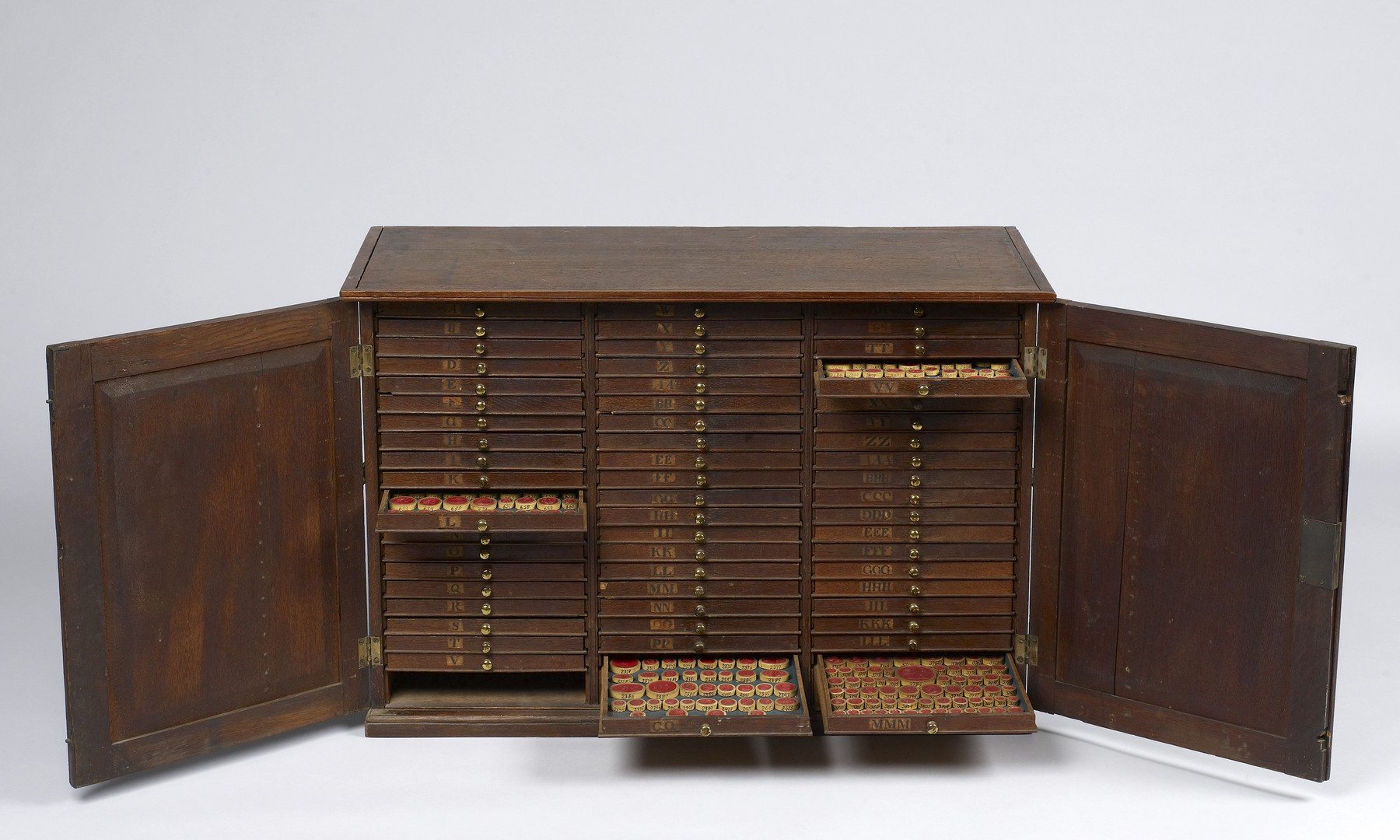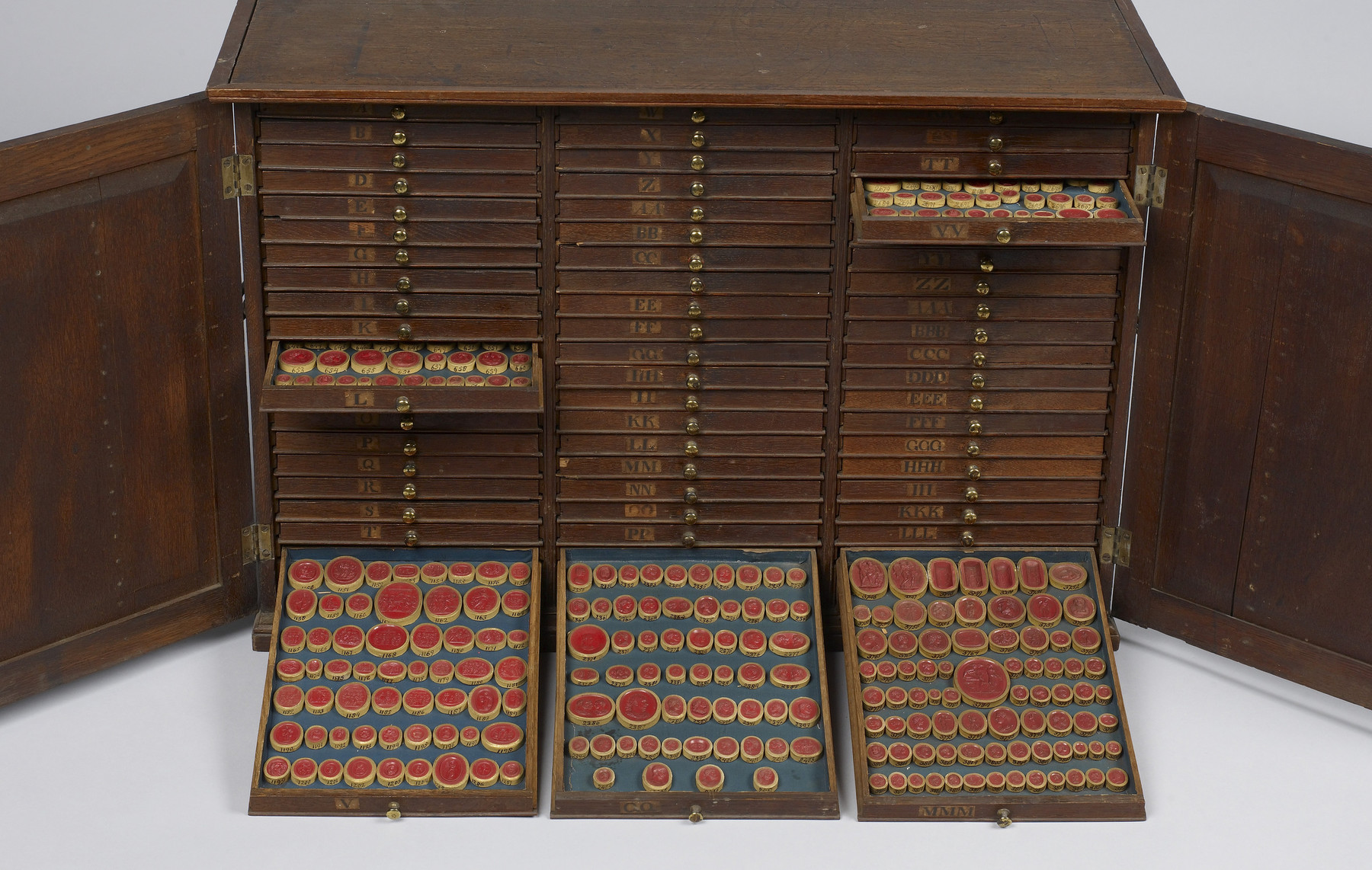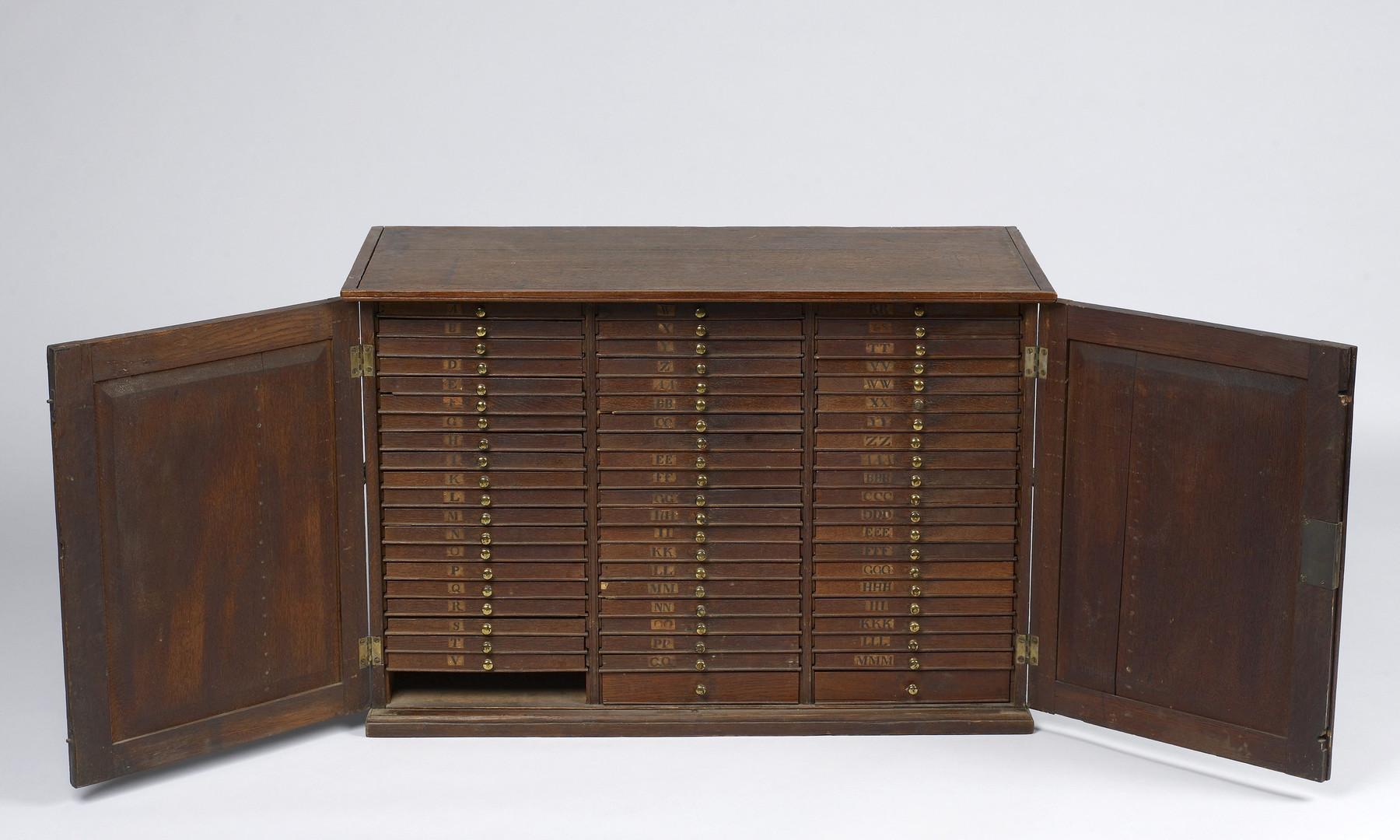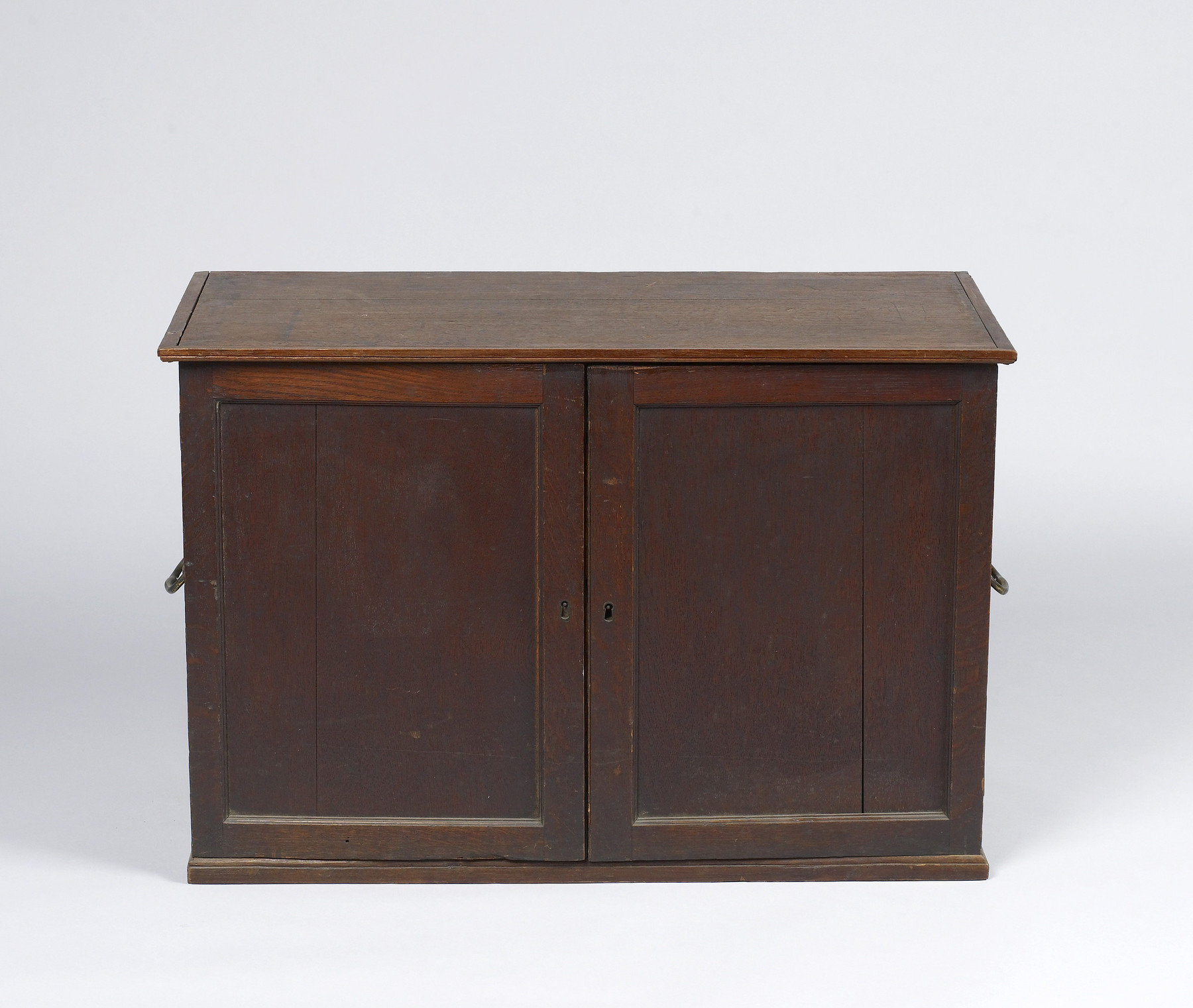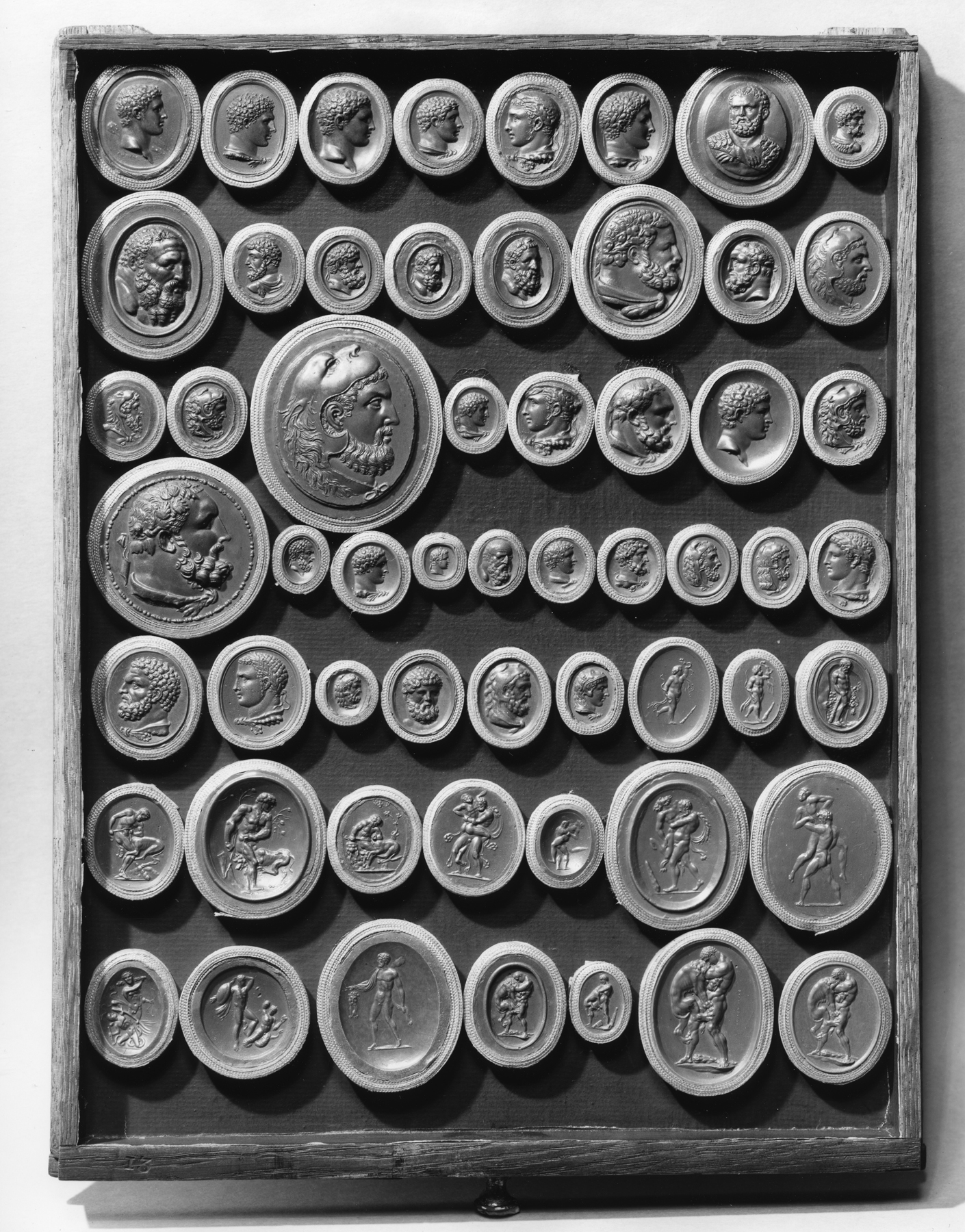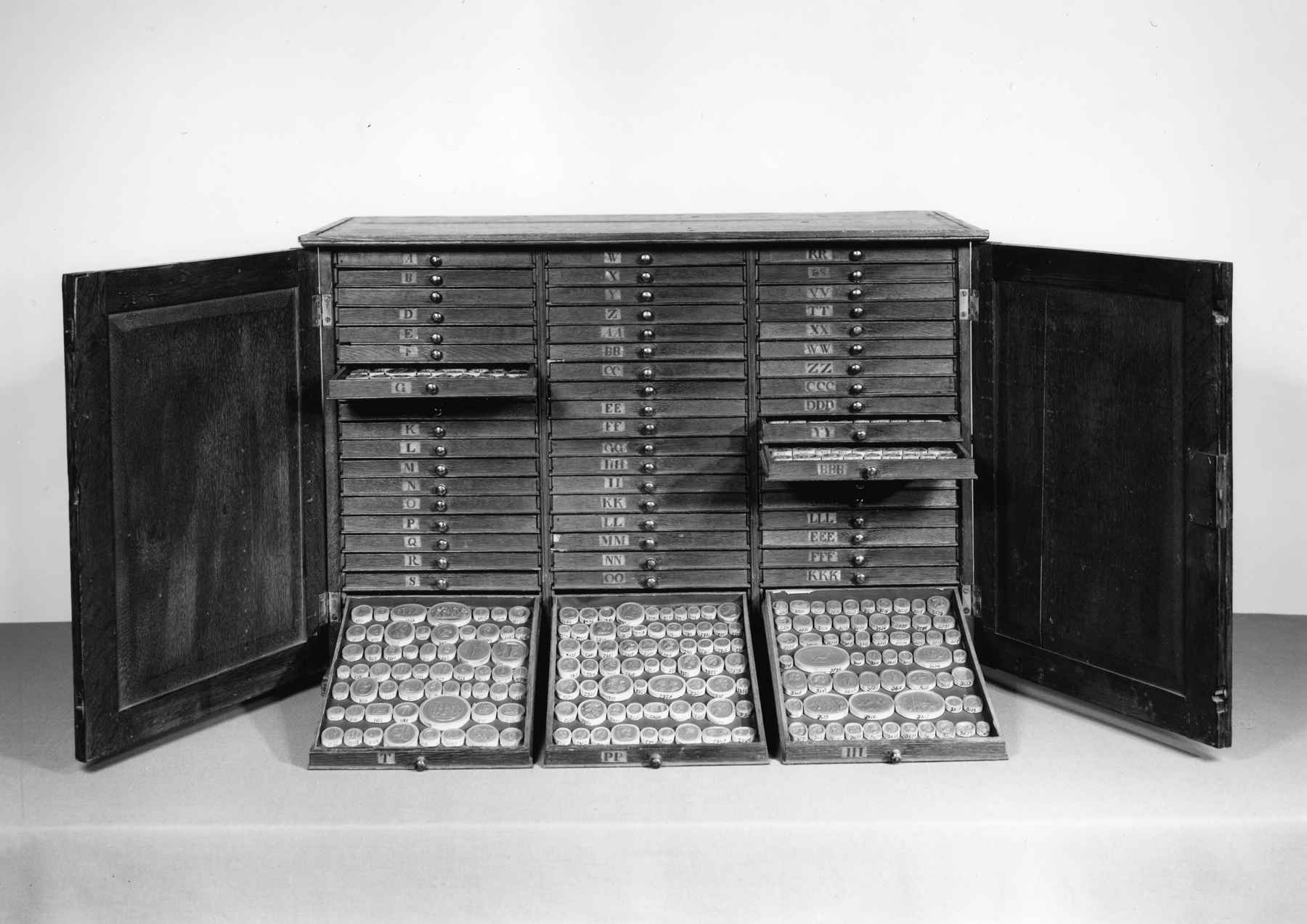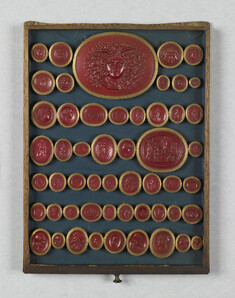Oak Cabinet Containing Sixty Drawers of Gem Impressions in Red Sulphur
(18th and 19th Centuries )
This oak cabinet contains red sulphur impressions of cameos and intaglios by James Tassie (1735-1799), modeler and portrait medallionist. Apart from some additions at the end of the series, the numbering of the cabinet's contents corresponds to the "Catalogue of Impressions in Sulphur of Antique and Modern Gems" (London: John Murray, 1775). This volume lists 3106 items, whereas the cabinet contains 3824 items (with on average 50 to 64 per draw). Fragments of paper found in a lower-draw of the cabinet seem to relate to Tassie's shop, perhaps suggesting that the cabinet was part of its furniture.
Tassie was born near Glasgow, the son of a mason. He attended the academy of art set up by the Glasgow printers Robert and Andrew Foulis. The Foulis brothers employed two Italian craftsmen specifically to teach skills in modeling. The brothers were famous for their editions of classical authors, so there is evidence that Tassie would have been surrounded by classical learning at this early stage in his career. In 1763 Tassie left Glasgow for Dublin where he worked with Dr Henry Quin, the city's most well known physician. Quin was a keen collector and amateur scholar of classical cameos and intaglios, who was experimenting with vitreous materials that could be used to reproduce them.
Tassie moved to London in about 1766, apparently as Quin saw the possible commercial application of their work to the jewelry trade. Tassie's success in London was swift. At this stage reproductive work concerned him most, and he sought out classical and modern engraved gemstone from which to make casts, such as the ones in this cabinet. Connoisseurs acquired complete sets of casts in either plaster, glass, or as here, sulphur (colored red with lead). Catherine the Great of Russia ordered one such collection in 1781, which was housed in a cabinet designed by the architect James Wyatt. In 1791 Tassie published a lavish two volume catalog of his stock, which by then numbered 15,800 items. The catalog was compiled by Rudolph Eric Raspe (1736-1794) (better known as the author of "Baron Munchausen's Marvellous Travels"). Raspe's catalog contained 57 plates of etched illustrations. Tassie's trade card for his shop in Leicester Fields (now Leicester Square), London can be found in the British Museum. Four similar size cabinets containing 15,800 items can be found in the Victoria and Albert Museum, London. As well as this cabinet filled with impressions, the collections at Walters Art Museum also comprise 59 intaglios and cameos in glass paste and two portraits in wax by Tassie, as well as numerous similar items by Tassie's contemporary, Josiah Wedgewood.
During the course of recent conservation it was noted that the underside of drawer “CC” is inscribed in black ink with the following inscription: “London; 23d; Apr; 1776 / Cleand these Sulfurs”.
Inscription
Provenance
Provenance (from the French provenir, 'to come from/forth') is the chronology of the ownership, custody, or location of a historical object. Learn more about provenance at the Walters.
Good's Cameo Corner, London, by 1933 (?)[1]; purchased by Dr. Thomas R. Boggs and Kate Newell Doggett Boggs, 1933 (?)[2]; inherited by Mrs. Thomas R. Boggs (Kate Newell Doggett Boggs), 1938; given to Walters Art Museum, 1942.
[1] Receipt found within a drawer in 42.1449 from Good's Cameo Corner, London, dated October 19, 1933. Included on this bill of sale was a "Collection of gem casts / in cabinet".
[2] The receipt detailed above is not made out to a named individual.
Conservation
| Date | Description | Narrative |
|---|---|---|
| 8/11/2015 | Examination | Examined |
| 8/11/2015 | Examination | Examined in preparation for exhibition. |
| 2/2/2016 | Examination | Examined |
| 2/2/2016 | Examination | Examined in preparation for treatment. |
| 2/10/2016 | Treatment | Cleaned, repaired |
| 2/10/2016 | Treatment | Cleaned and repaired in preparation for exhibition. |
Geographies
United Kingdom, England, London (Place of Origin)
Measurements
H: 20 x W: 30 x D: 14 in. (50.8 x 76.2 x 35.56 cm)
Credit Line
Gift of Mrs.Thomas R. Boggs, 1942
Accession Number
In libraries, galleries, museums, and archives, an accession number is a unique identifier assigned to each object in the collection.
In libraries, galleries, museums, and archives, an accession number is a unique identifier assigned to each object in the collection.
42.1449


